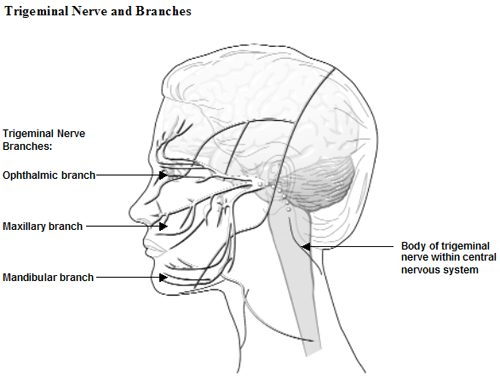Sinus Headaches and Migraines
Migraines and sinusitis are common problems for about 10 - 20% of Americans respectively. If you experience recurrent headaches associated with discomfort around the eyes and nasal congestion, you may believe you have “sinus headaches.” However you may actually have migraine headaches with no associated sinusitis. For example, in a recent study, 4 out of 10 individuals with a diagnosis of sinus headaches actually met criteria for the diagnosis of migraine headaches. In another study, 90% of participants who thought they had sinus headaches met criteria for migraine headaches. One reason for the confusion is due to widespread consumer advertisements directed at relief for “sinus” or “sinus headaches” for any pain felt in the midfacial area. Recent studies have shown that sinus symptoms like congestion, runny nose and tearing typically attributed to sinus headaches may be experienced during migraines. In addition nasal allergy, chronic sinus disease and migraine can all be triggered by weather changes. Therefore a history of weather change induced headaches does not help distinguish nasal allergy from symptoms from migraines or sinusitis. To complicate matters, up to 1/3 of individuals with upper respiratory allergies also have migraines.

How then do you know when facial headache and pressure is due to sinusitis or allergies and when it is due to a migraine or other forms of headache? Without nasal discharge, fever and CT evidence of sinusitis, you may think you are experiencing “sinus headaches” but actually have nonsinus related migraine headaches. This is particularly true if headaches are associated with nausea, vomiting, visual disturbances, light and noise sensitivity.
Headaches due to sinusitis are usually a result of acute sinusitis. Most pain from sinusitis is probably due to inflammation. It may also be caused by pressure within the sinuses brought on by air or fluid trapped within the sinuses. Air may be blocked from entering or exiting the sinus as a result of swollen tissues. Air absorbed by inflamed sinuses creates a partial vacuum resulting from negative pressure within the sinuses. Such changes in pressure can produce intense sinus pressure and headaches. Furthermore sinus headaches have been related to sinusitis following exposure to low pressure weather systems or during descent in an airplane or scuba diving. In these later examples, pain may result from barotrauma.
Sinus headaches will usually significantly improve following effective treatment of acute sinusitis. Individuals with acute and chronic sinusitis or blockage of the paranasal sinuses will complain of headache and facial pain. The pain usually occurs at the beginning of the illness. Sinus headaches are often deep, dull, aching, or pulsatile. The ache is often combined with a feeling of heaviness or fullness. Acute sinusitis headaches rarely cause vomiting, light and noise sensitivity, or nausea. These latter symptoms are commonly experienced with migraine headaches. The intensity of the pain with acute or chronic sinusitis usually does not approach the pain experienced with migraine headaches. The pain of a sinus headache is often intensified by bending or shaking the head, straining, coughing, sneezing, or wearing a tight collar. If you suffer from both sinus disease and migraine, the pressure experienced within the sinuses can often trigger a secondary attack of migraine. Unfortunately few recognize the connection among sinus disease, migraines and allergies.
Migraine headaches are caused by the widening or dilation of blood vessels in and around the brain and the activation and inflammation of the trigeminal nerve and/or branches of the trigeminal nerve.

The trigeminal nerve reaches 3 distinct branches over the face, covering the membranes and surface of the face, including ophthalmic, maxillary and mandibular divisions (sensory pathway). Migraine pain is usually moderate to severe and often pulsating. It can be experienced on either one or both sides of the face or head and can be felt in various locations along the trigeminal nerve and its branches, such as on top of the head, behind the eyes, below or above the eyes, in the sinuses, or in the back of the head or neck. It is often associated with vomiting, nausea, sensitivity to light, noise and movement with or without visual disturbances. In addition to the pain, migraines may be accompanied by runny nose, nasal congestion and tearing. Therefore when nasal symptoms occur during a migrainous event, they appear to be triggered neurologically but can be confused with symptoms of sinus disease and/or allergy.
Adding further complexity and confusion to the source of your headache, you may experience headache due to acute sinusitis or upper respiratory allergies which can often trigger a migraine headache. In fact, you may find that improvement of your sinus and nasal symptoms leads to fewer migraines. This is particularly true if you have nasal allergies. In addition, if you have both allergies and migraine, you may experience fewer migraines when on allergy injections.
Other Causes of Facial Headache
Other causes of headaches in the sinus area may begin in the nose. Abnormalities of the nasal septum, either present from birth or caused by trauma, can exert pressure on the sensitive nasal wall. This can cause a sense of facial pain as well as chronic headache. Examples include:
- A deviated septum associated with blockage of the nose
- Large concha bullosa (air filled turbinate)
- A large nasal septal spur (a bony ridge that grows abnormally off the septum)
- The presence of a blood collection (hematoma) in the septum or nasal tumor
Headaches caused by these conditions can usually be corrected by surgical techniques. Treatment for nasal allergies with medications such as antihistamines, decongestants and nasal corticosteroids may also help headaches.